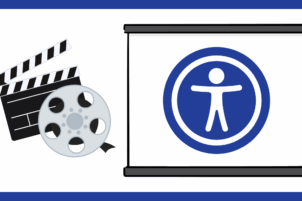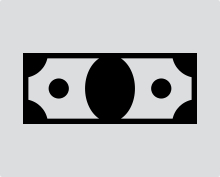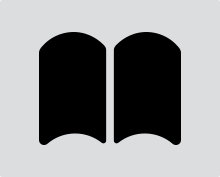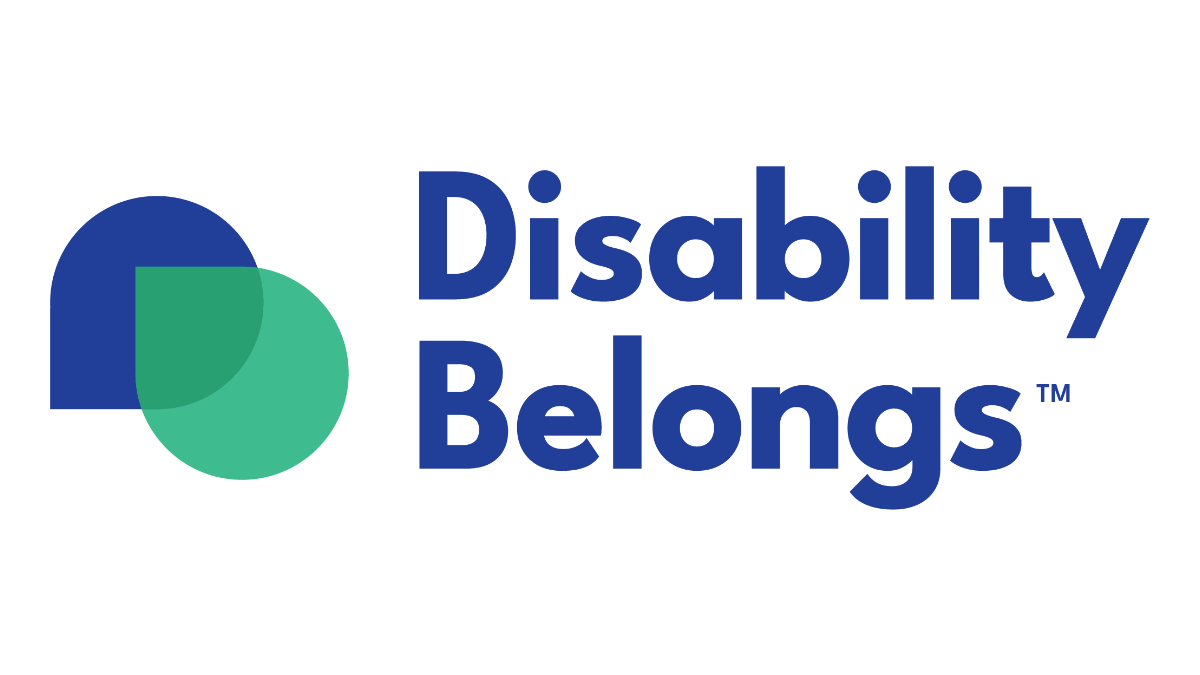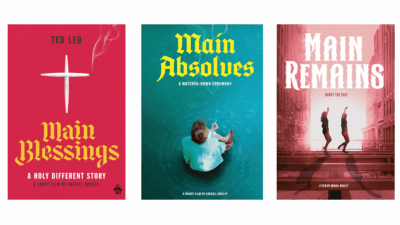 Inspired by personal experience, The Main Trilogy Writer and Director Abigail Bruley snapshots one person’s attempt to return to life as she knew it before acquiring a disability.
Inspired by personal experience, The Main Trilogy Writer and Director Abigail Bruley snapshots one person’s attempt to return to life as she knew it before acquiring a disability.
“[A]t first, I thought that I was documenting, but really, as it turned out, I was, like, mythologizing,” Bruley said in an interview with Disability Belongs™. “I was turning the phases of post-injury identity like the shame, the avoidance, the rage, the theatrical overcompensation…into something stranger and funnier than real life… kind of told through a character who’s in the ‘in-between’ and just figuring things out.”
After acquiring a disability and spending some time in the hospital recovering, the trilogy’s protagonist, Main, is reintroduced to a life that seems to have changed dramatically without her—by her friend, Lars, who in the last ten months, decided he wants to be a priest, and by her little brother, Vinny, who decided he wants to be called “Vincent.”
Despite Main’s awareness of changes in the people around her, they seem oblivious, indifferent to, or even inconvenienced by the changes in her. Her name, Main, counterbalances the invisibility her character feels.
“It honestly started as a placeholder: ‘Main Character,’ but then I just couldn’t let it go,” said Bruley. She explained that the name reflects the need to center oneself instead of waiting for someone else to do so. “It felt just so weirdly accurate like, there’s something about being seen askew, or really not at all, in your life that makes naming her ‘Main’ kind of feel like a correction.”
Bruley also suggested that it was as if the character was trying to brand herself as both mysterious and important. “I’m kind of a science and anatomy lover and there was this subtle nod to the brain pathways… being like the main circuit, the main artery and something vital that like has gotten interrupted… it was [a] name that carried both a joke and a wound at the same time, which is basically the whole personality of the character.”
Chapter One: Main Blessings
The joke and the wound are both evident as Main’s story unfolds across three chapters, each of which can be enjoyed alone or as part of the trilogy. In the first film, Main Blessings, Main shows up in the apartment of her friend, Lars, re-entering his life like someone who just pressed play on a movie that had been paused for several months. While Main’s encounters feel relatable, a full understanding of her experience seems just out of the audience’s reach, making every moment of the viewing an adventure.
“These films don’t offer answers, just a series of doors,” Bruley shares in her artist statement. “Open whichever ones you like.”
The unexpected twists are as much a commentary on life with an acquired disability as they are clever ways to move the story forward.
“It’s kind of a whole bunch of different kinds of doors,” Bruley elaborated. “There’s [sic] emotional trap doors, there’s psychic revolving doors, there’s the creaky childhood door that was always so creepy. So, what I’m most interested in is kind of giving people a whole hallway of these kinds of doors and just being like, ‘Have at it. Let’s see what you discover.’”
Rather than trying to accommodate social norms, The Main Trilogy celebrates the unorthodox and the diverse, which makes the series a thought-provoking expedition into the “different.”
“Some doors open into humor, others into rage, tenderness. Maybe in one you’re seeing yourself way more clearly and in another one it’s just a room full of fog [or] you’re not seeing anything at all, and that’s okay too,” said Bruley.
Chapter Two: Main Absolves
The disjointed kaleidoscope of Main’s experiences in the second film provides a calmly chaotic glimpse into both her perceptions of the world and her fraying connections to the people in it. In Main Absolves, she completely dissociates during a family gathering being held in her honor, retreating to the safety of her own world when her reality ceases to make sense.
“The trilogy really walks through grief, identity, memory,” Bruley said. “There’s this strange theater with family because it’s like, ‘What does it mean to be misunderstood by the people who are supposed to know you best?’”
The irony is that Main seems to be getting to know her post-injury self, too, assessing family dynamics and reframing her own identity by letting go of cultural expectations. “Her interactions are weird because the world is weird to her,” Bruley noted, “especially when it doesn’t know what to do with someone who’s no longer following the script that they’re following. And she doesn’t really perform likability or normalcy the way people expect, and that creates a kind of rupture of possibilities. So, in a way, her awkwardness becomes a mirror. It’s like showing how easily the people around her slip into routines and roles and expectations. When she doesn’t fit in exactly, it’s not just her problem. It’s like showing kind of a crack in the system.”
Bruley has been navigating this system herself following a traumatic brain injury caused by a near-fatal car accident in 2013. The years since have been a journey of making meaning where it was elusive and rediscovering what could not be recalled. Similarly to her creator, Main lives in a world that used to make sense to her but is now a puzzle to be solved—or maybe just accepted. Bruley uses themes like spirituality to highlight the fact that finding answers does not always have to be the goal.
“The supernatural element in these movies… it’s not about ghosts or gods or anything, but I am obsessed with that as well. But it’s more like… What do you turn to when the real world really stops making sense? [A]nd similarly for Main, the afterlife doesn’t show up as like a dreamy paradise or a fiery punishment, but it’s like more red tape, more deadlines, more paperwork, more rules. And so, it’s basically a system, which is kind of hilarious, but also a little grim,” Bruley said. “I think the supernatural stuff just gives her a way to express things that doesn’t come easily otherwise, like grief that’s like too strange to explain. Or like the feeling that your life doesn’t quite fit anymore. So, for her, the supernatural actually feels more honest than regular lives… it’s not about escape. It’s kind of about telling the truth but sideways.”
Chapter Three: Main Remains
Main’s life is not a quest to fix or resolve anything, and neither, apparently, is her death. After a freak accident claims her life in Main Remains, the third installment of the trilogy, Main explores another level of acceptance, which involves the decision to forgive in order to achieve personal freedom, if not in pursuit of some idealistic moral high ground.
While the trilogy depicts sentiments and experiences that are relatable to many people with disabilities, and even some parallels to Bruley’s own story, it was not meant to be autobiographical.
“I like to say that Main and I were not the same person, but we’ve loitered in the same parking lots… we’ve both had the experience of a ‘before and after’ brain,” Bruley clarified. “I didn’t really set out to make films about my experience with TBI, but it turns out that when you spend your years recalibrating how you think and you feel and you remember and you speak and you relate to the world, some of that’s going to leak into the work.”
She did note some similarities, however, with the emotions that characterized her own recovery. “Her stubbornness, her hypersensitivity, her obsession with memory and revenge. All of that is dramatized and distorted and filtered through this genre.”
That said, Bruley has embraced the “different” and allowed it to shape her creativity and artistry in unique ways. She described being a creative with a disability in the most poetic way. “[I]t’s unruly and sharp and obsessive and slow burning and electric and unlike anything else.” She wants people to understand that “…my creativity and disability are not separate. They definitely grew up in the same house. That pacing is not the enemy of brilliance. That there’s intelligence in tangents, precision, and what looks like chaos. And that it’s not a tragedy to work differently. It’s a method.”
The Main Trilogy: Embracing Life as it Comes
The Main Trilogy is about someone taking ownership of her life, which happens to include managing a disability, and about representation for people with related lived experience. It is an exploration of “the messy kind of complicated truth of invisible disability, how it affects the way you interact with the world, how you process things, how you see yourself.”
“I want people whose brains think differently to finally see themselves on screen in a way that’s real and not just some tired trope, letting disabled rage have its moment—that rage that kind of comes from a world that’s always rushing past you, expecting you to match its pace without ever looking back and noticing the complexity of how it might be to move through that. Main’s story is really about slowing down and making space for that complexity to happen.”
For those who may not have a disability, Bruley shared: “I just really want viewers to walk away with maybe a little peek into the interior world of someone with an invisible disability. And maybe with all the death stuff, they [will] realize how fleeting life is, how precious every moment becomes when you stop to really see it.”
The Main Trilogy is an often cathartic, very subjective, and extremely insightful anthem about choosing to release normative social constructs and just embrace life as it comes. Whether or not viewers are disabled, some part of Main’s journey is likely to resonate because it is not just about a woman with a TBI—it is about the human experience.
Bruley is an alumna of the 2022 Disability Belongs™ Entertainment Lab in Los Angeles. You can watch the trailer and sign up for updates on upcoming screenings on Bruley’s website. If you’re a programmer or part of a support group, feel free to reach out to receive a private screener.

